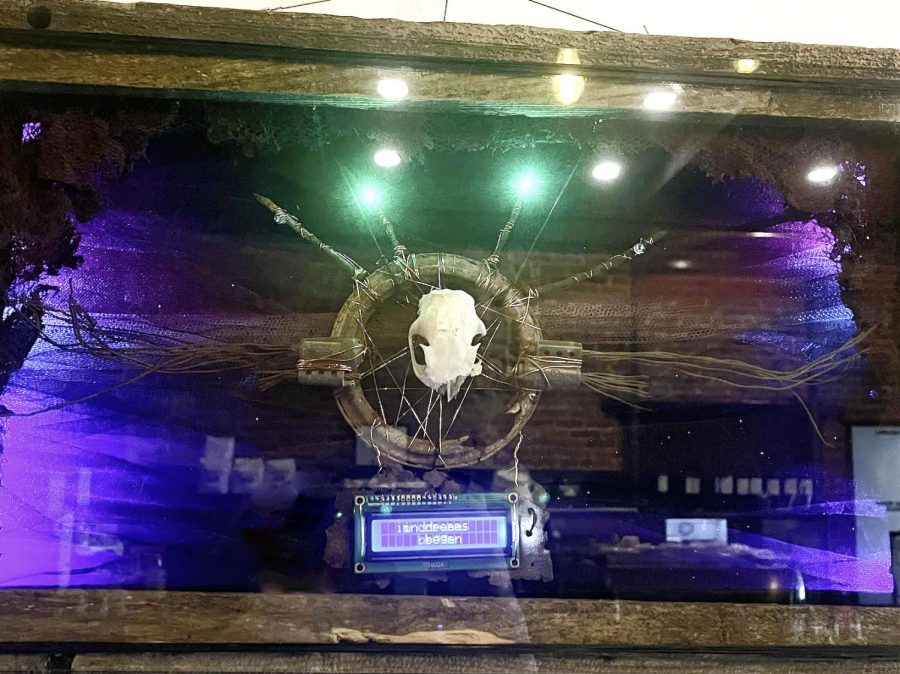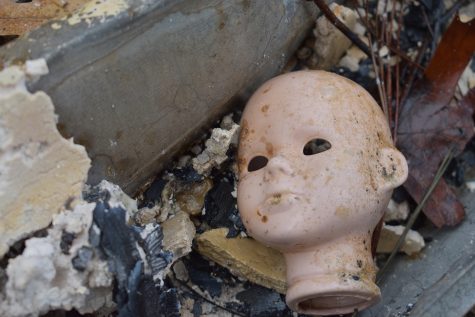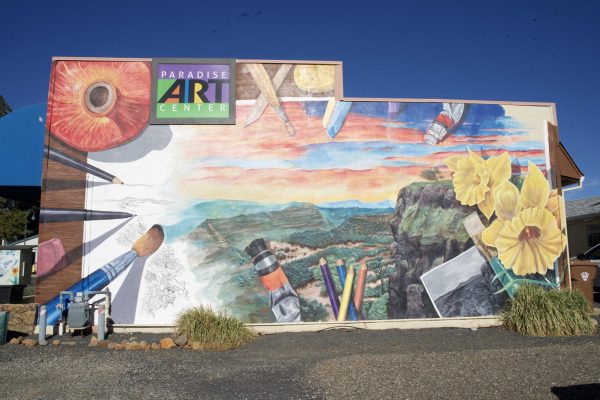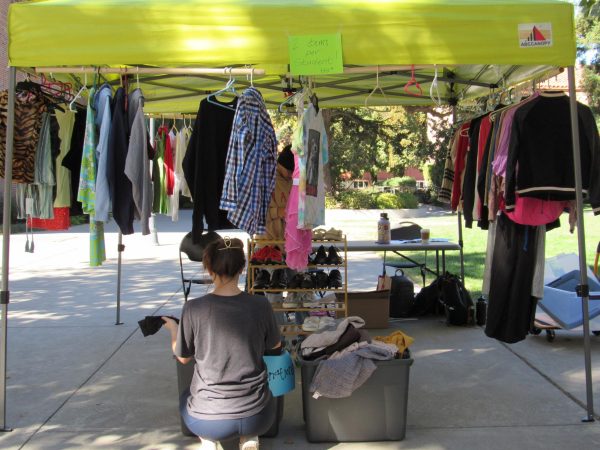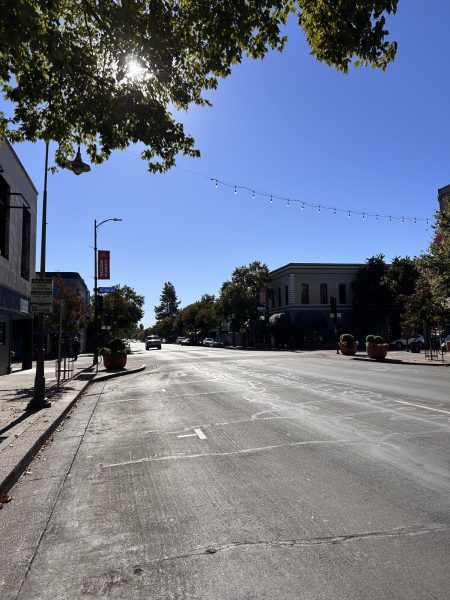Zak Elstein: Artistic capsules and windows to thought
One of Elstein’s horizontal shadow boxes hang on the right wall of The Naked Lounge. Blue, green and purple lights are diffused via the sheers and lace at the back of the box. Taken by Ariana Powell on Feb. 7.
Dramatic red lights cast a harsh shadow on a white, bleached cat skull attached to a chain above vertebrae hanging in a symmetrical manner. A crystal rests at the bottom in the middle, reflecting light, almost like a prism, adding some beauty to the somber and macabre scene against a felt background, all framed by wood and hidden behind opaque glass.
This is one of the scenes that Zak Elstein, a local artist, has crafted. He creates shadow boxes, centerpieces encompassed by glass and wood, from found objects.
For most the future seems daunting, and often provides feelings of uncertainty and loss. Elstein looks not only to the near future, but into the far beyond, when our civilization fizzles out and “humans become more animalistic.” His art acts as time capsules for those that come after.
He believes that our world and society will eventually come to an end.
“Instead the universe, and everything in it, seems to exist in a constant state of change, a never-ending loop of creation destruction, creation destruction, creation destruction, and so on,” reads Elstein’s website.
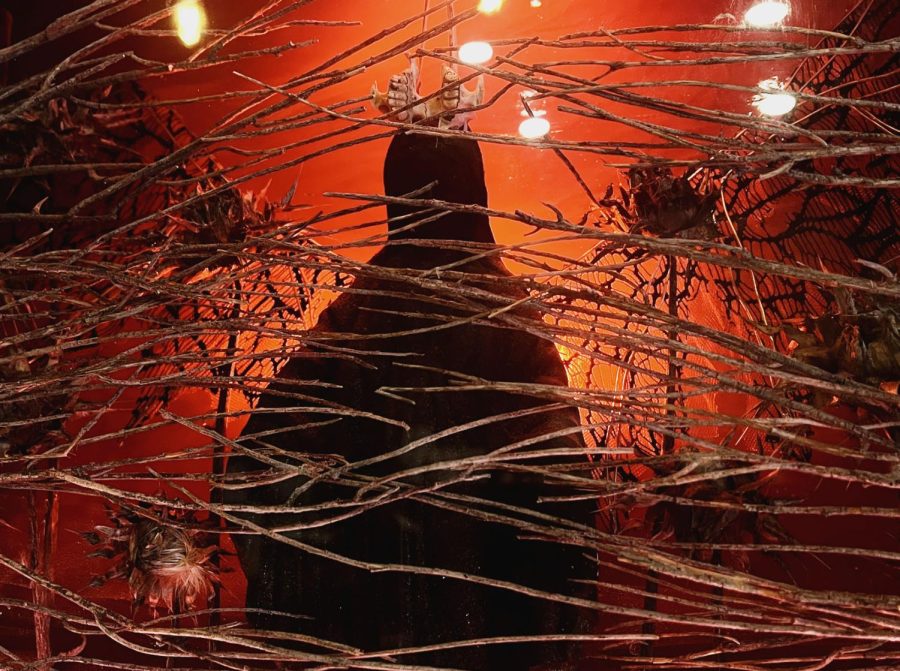
He hopes that these shadow boxes survive the end so that they can be unearthed. The boxes include items such as animal bones, sticks, broken glass, rusted cutlery and most importantly, lights.
Every box contains some form of lighting that not only adds dimension and a sense of drama, but also provides onlookers the ability to interact with what they see by flipping switches to change colors.
“As a kid I really liked children’s museums, being able to press buttons and make things move and change,” Elstein said. “So interaction was always kind of the plan,”
The evolution of lighting within the boxes has changed since he started creating them about six years ago. Originally he used “those LED lights that are used on toys, the round ones,” but he has since moved on to more advanced set-ups. The color of the lighting has also evolved from “Crayola” colors, like yellow, blue and red, to various hues of purple, pink, orange and green.
Recently, he has been experimenting with different ways to refract light, including the use of sequins.
These LEDs are the only non-found objects used in the boxes. Most of the internal items, like rusty spoons, candles, bits of metal and animal remains, he finds at dumps.
Elstein has never harmed an animal to make any form of art. He has abstained from consuming meat for several years. His website reads:
“To be clear, I’m a scavenger, not a hunter. I’ve never hurt, or killed any of the animals in these quests and projects. Everything in these boxes was found, sometimes clean, sometimes dirty, often smelly, but always already dead.”
Elstein originally began finding remains when traveling through the deserts of Utah and Nevada.
He lost his home in the the 2018 Camp Fire.
“They [the shadow boxes] were some of what I grabbed during the Camp Fire. I thought there’d be more time, but …”
He spent the majority of the 2020 COVID-19 lockdown creating the bulk of his boxes.
When initially learning to clean bones, he became the disciple of YouTube tutorials. Through the action of cleaning the bones he often contemplates death, and has come to terms with the idea that it is inevitable, and believes that others must become acquainted with this as well.
Despite the complicated emotions that Elstein disseminates into his art, he does not have any hope that his audience will walk away with similar sentiments. Elstein understands that his art appeals to a certain crowd. He is surprised that there hasn’t been pushback against his darker themed art.
“There have been times that they’ve [the shadow boxes] been hanging in restaurants where people are eating and no one has said anything,” Elstein said.
The shadow boxes have been showcased at multiple locations including the Blackbird Cafe, before it closed, and the Winchester Goose. Most recently, his art is being showcased at The Naked Lounge as February’s featured artist.
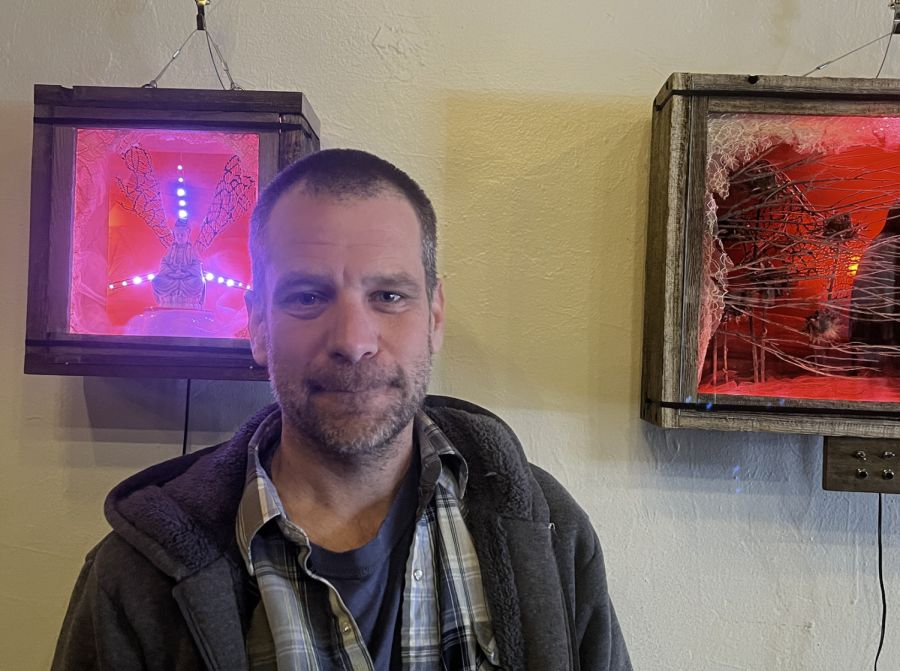
Elstein also tries to keep his shadow box business separate from his other art projects. Along with working at the Butte County Office of Education as a student learning aide, he makes custom music boxes.
“I know that some of the people who buy the music boxes may not like them [the shadow boxes],” Elstein said.
Along with the found objects Elstein finds at dumps, he also picks up embroidered cloth and lace from thrift stores, and lines the boxes with wood that is repurposed from old fencing.
Elstein even cuts the glass that acts as a barrier between art and audience. This was what made the shadow boxes ultimately come to be. Elstein wanted to create something that people would want to hang on their walls, and learning how to cut glass gave him reason to move ahead with creating them.
The boxes’ themes vary from piece to piece, however, most center around death and nature. Some look like a forest or a sunset, and others simply create a symmetric centerpiece featuring remains.
When it comes to building concepts, Elstein says that he doesn’t necessarily know what he’s going to create. He often looks at his hauls from the dump, sees what he has and then puts together centerpieces according to what he has at his fingertips.
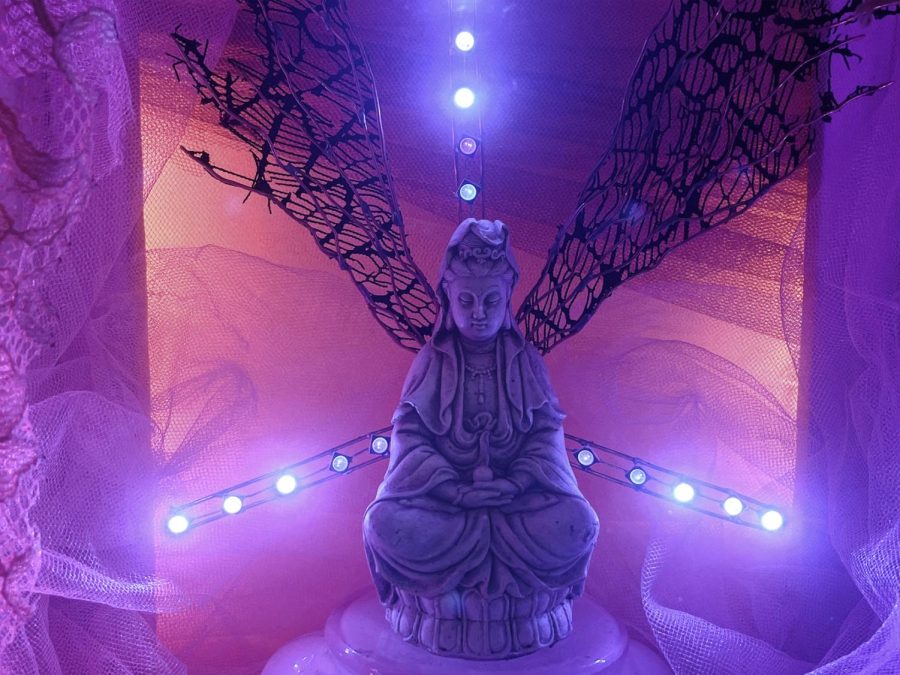
Some of his centerpieces focus on religious figures and symbols. Lately he’s been using idols, something he is unsure about.
In a rat shrine box, he even includes upside down crosses, which are often linked to Satanic worship. However, he doesn’t use these symbols due to their current meaning. He thinks ahead to those of the future, after civilization’s fall, and how they might interpret these symbols. He admits that these future beings could very well have no idea what they mean, despite the heavy negative or positive connotations we assign them.
Religion is something that seems, at the same time, important and relative to Elstein. He was born Jewish, but isn’t devout, however he does believe religion is essential to our society.
“In our efforts to understand the things we could not, we sought out and formed relationships with the demons and spirits that lived alongside us,” reads his website. “We gave them worship, prayer and ritual, and in exchange our demons led us towards connection and understanding.”
Now, things have changed, according to Elstein.
“The realms that once existed could have gotten pushed into a corner, or have just disappeared.”
Ariana Powell can be reached at [email protected].




